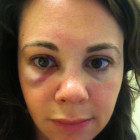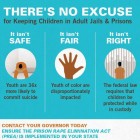
A Mother’s Mission
|
Grace Bauer had her entire world turned upside down when her son entered one of the nation’s harshest juvenile justice systems. Fueled by a burning desire to alter the system, she soon became one of the nation’s most impassioned crusaders for sweeping juvenile justice reform. Editor Note: This story is a continuation of the series Mental Health and the Juvenile Justice System: Progress, Problems and Paradoxes. Readers may also be interested in visiting the Juvenile Justice Resource HUB for more information about mental health and the juvenile justice system. --
The death of Grace Bauer's mother in 1998 triggered a cycle of grief that fully consumed her life for the better part of 15 years. “It became the mark we would measure time by,” she said. The pain, she said, was especially severe for her eldest child, Corey, who was 11 when his grandmother died.










